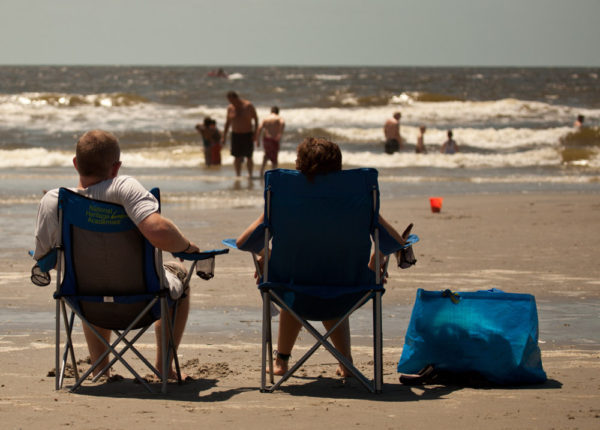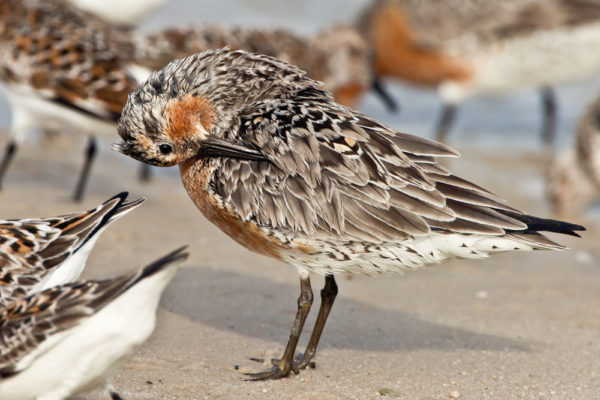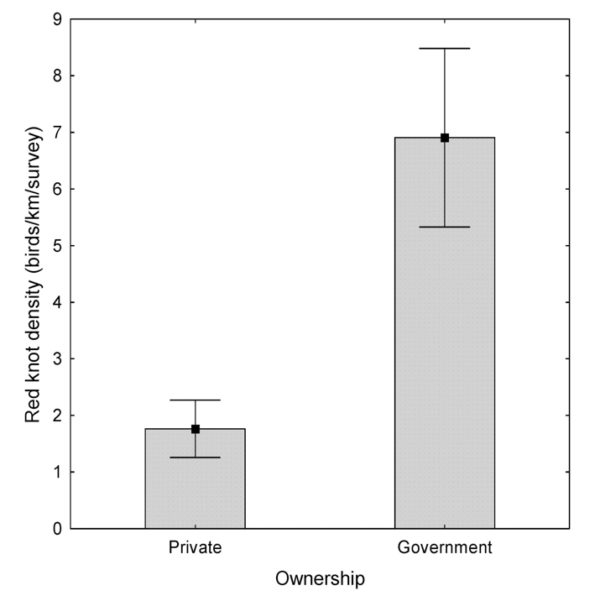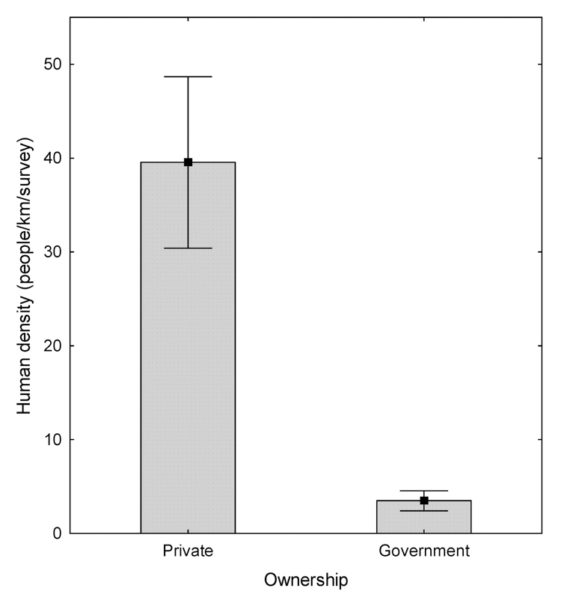People and Shorebirds Flock to Beaches

Grace Returns to TRS March 25, 2017
March 27, 2017
Grace Round-Trip TRS/Red Wing/TRS 4/2/2017
April 3, 2017
Let’s face it, people love to spend time on sandy beaches. We love the combination of sun, sand, and water. In the United States, travel and tourism is the nation’s largest industry, employer and foreign revenue earner, and beaches are the leading tourist destination. Each year 180 million Americans make 2 billion visits to beaches – more than twice as many as to all national and state parklands combined. The revenue generated by these visits is greater than the combined export value of agricultural grains, aircraft, computers, and telecommunications equipment. The revenue supports one in every ten jobs in the country and represents the economic foundation of many coastal communities.

For many Americans, there are not many experiences that match a leisurely day at the beach. Globally, beaches are one of the largest tourist destinations accounting for nearly 4% of the world’s GDP. An increasing number of beaches along the south Atlantic Coast of North America now support the infrastructure to accommodate large numbers of destination tourists and the revenue from these tourists is essential to local and regional economies. Photo by Bryan Watts.
Several species of migratory shorebirds depend on beaches for a portion of their annual cycle. For some, beaches along the Atlantic Coast represent terminal refueling sites where shorebirds must forage to build up the energy reserves needed to make their final flight to arctic breeding grounds. Many of these species are sensitive to human disturbance. Human activities may force them from beaches to less profitable foraging areas may alter their foraging behavior or foraging times and ultimately reduce food intake and energy storage. For some species, human and shorebird use of beaches is not compatible. Our love and use of the beach effectively renders extensive swaths of the coastline off limits to some shorebird species.

Red knot preens on the beach. The federally threatened rufa population of the red knot, along with several other migratory shorebird species, depend on beaches along the Atlantic Coast for refueling before their final flight to arctic breeding grounds. Their association with these beach habitats has evolved over thousands of years. Photo by Jan van de Kam.
Beaches along the south Atlantic Coast of North America are critical to both the regional economy and to migratory shorebirds. How to accommodate these two important user groups is one of the great conservation challenges faced by coastal land managers. During the springs of 2011 and 2012, CCB conducted aerial surveys of the entire coast of North Carolina to evaluate the interrelationship between human use of beaches, beach ownership, and shorebird distribution during the spring staging period. A paper focusing on the federally threatened red knot titled “The influence of land ownership on the density of people and staging red knot on the coast of North Carolina” is being published in the journal Wader Study. North Carolina is particularly well suited for this investigation because in recent decades the outer coast has reached “terminal build out,” where more than 98% of the coastline is either privately owned and developed or owned by government agencies focused on natural resources. There is virtually no remaining opportunity for conservation acquisition.
Land ownership had a dramatic influence of the distribution of both red knots and people. Average knot density was more than four-fold higher on government compared to privately-owned lands. Conversely, human density along the shoreline was more than ten-fold higher on private lands compared to government lands. Along the coast of North Carolina, private lands include resort hotels that support extreme human densities and residential developments that support permanent residents or vacation rentals. More than 80% of knots surveyed occurred on shoreline segments that supported less than 5 people per kilometer of shoreline. These conditions were most frequently found on government lands with active beach closures. Migrant red knots appear to benefit from beach closures imposed to protect nesting piping plovers and sea turtles.

Land ownership had a significant influence on the density of red knots staging along the beaches of North Carolina. Government-owned beaches supported more than four times higher knot densities. Data from CCB.

Land ownership had a significant influence on the density of people during the late spring along the beaches of North Carolina. Private beaches were used by tenfold higher numbers of people compared to government-owned beaches. Data from CCB.
For coastal landscapes that have reached terminal build out, some of the best opportunities for red knot conservation revolves around managing human behavior and access to critical sites on government-owned lands. This may include seasonal closures of the most critical sites, limiting the number of access points to less critical sites and providing education system-wide to change human behavior during critical times of the year. A great challenge will be to strike an appropriate balance between access that may be important for local economies and restrictions that are essential to shorebird conservation.
Written by Bryan Watts | bdwatt@wm.edu | (757) 221-2247
March 28, 2017



